Jallikattu
India
It is the most dangerous ceremony.
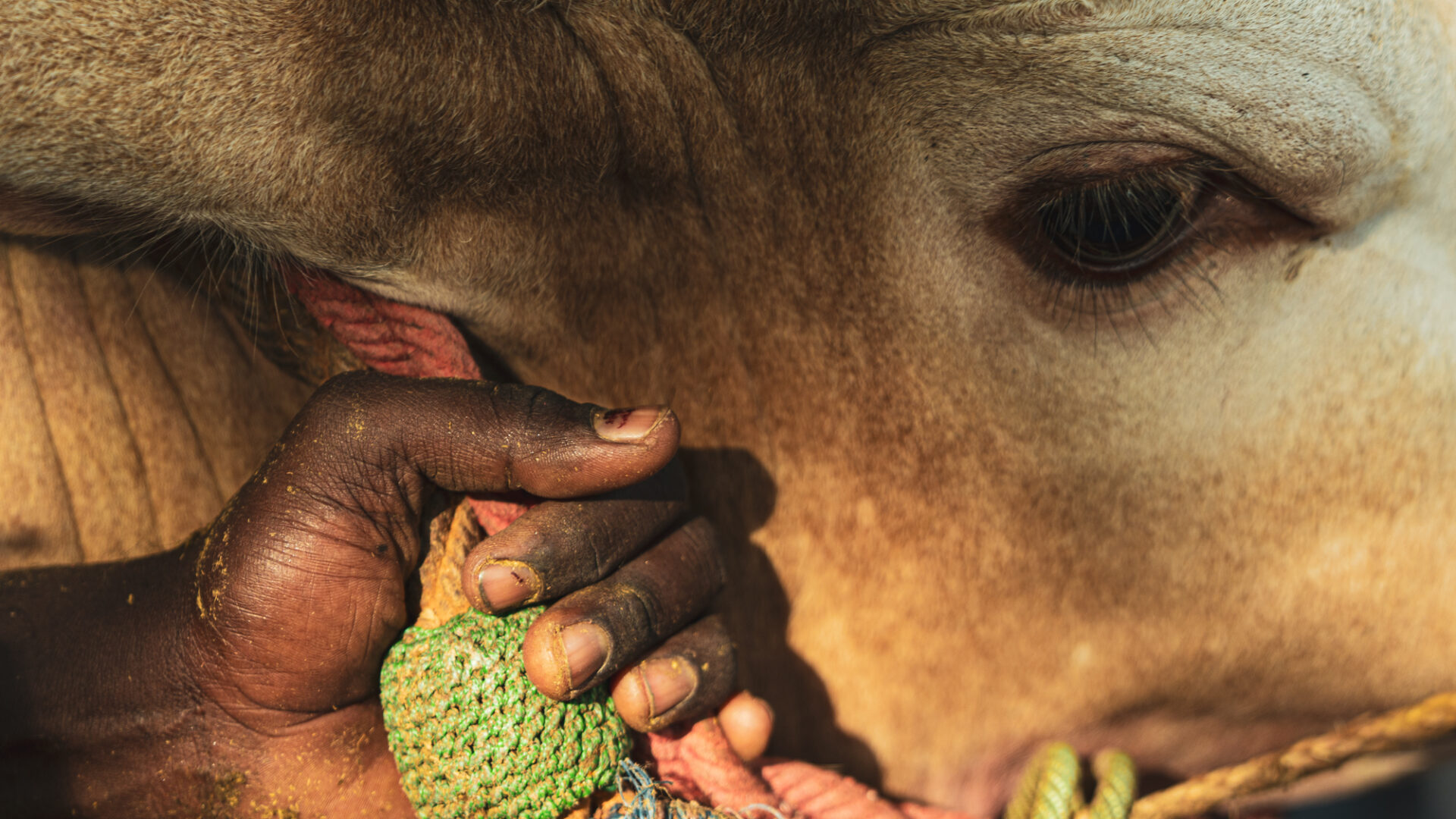
In 2011, the Supreme Court of India banned Jallikattu following concerns from animal rights activists, but the ban was lifted in 2017 after protests and legal challenges.
This event has a historical background, dating back to around 400 BC to 100 BC. Originally, it was a ritual of the Tamil tribe warriors. Women, in turn, observed the courageous actions of the men and used them as criteria for choosing a potential marriage partner.
The Pongal festival, originally a day to express gratitude to cows for their role in farming, now includes Jallikattu as a part of its celebrations. However, the controversy persists, as incidents of injuries and fatalities, both human and animal, have been reported. The debate on the ethicality of Jallikattu continues, with contrasting views on its cultural significance and the well-being of the bulls involved.
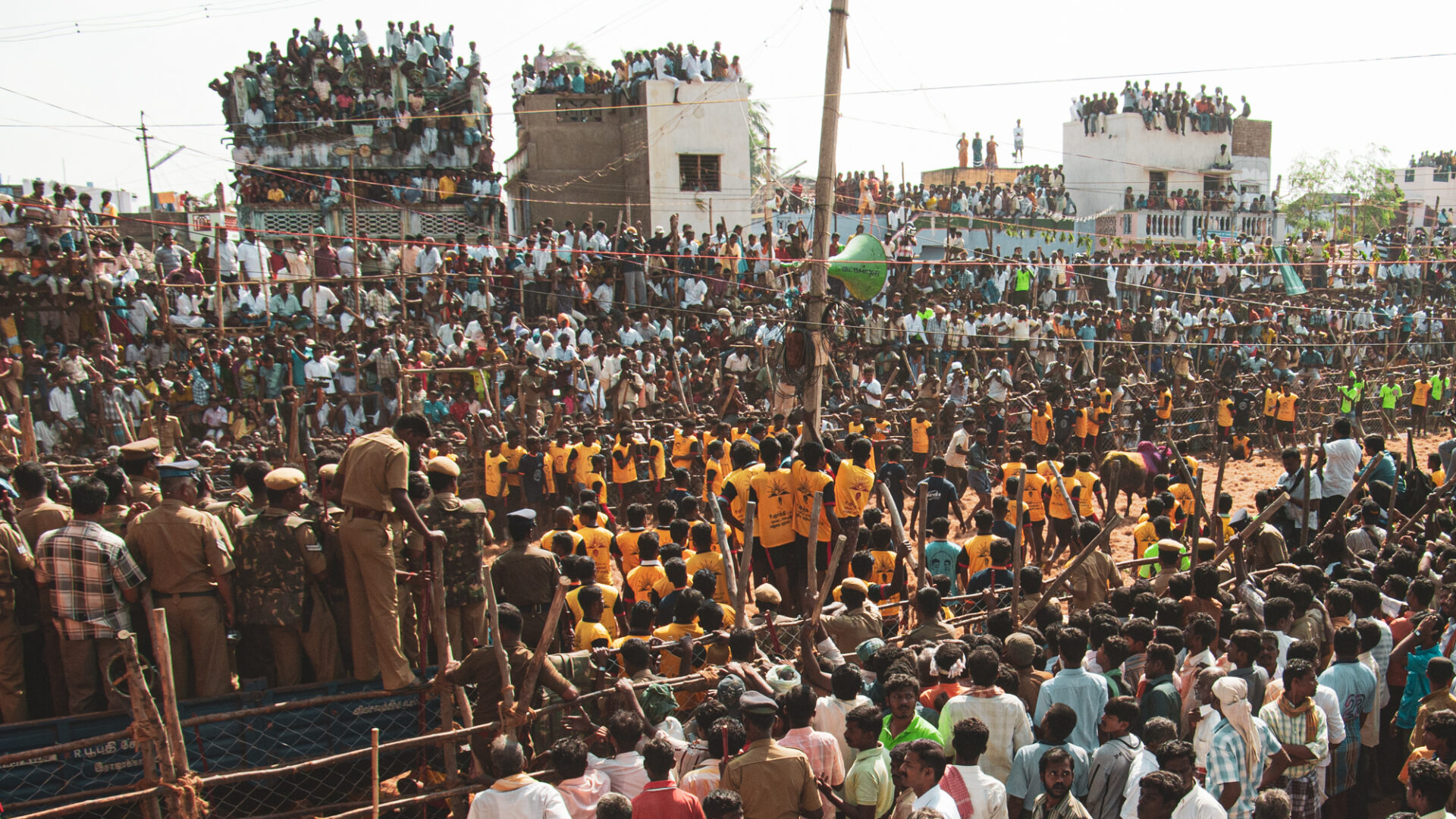
Hours before the festival begins, the venue is filled with spectators and press.
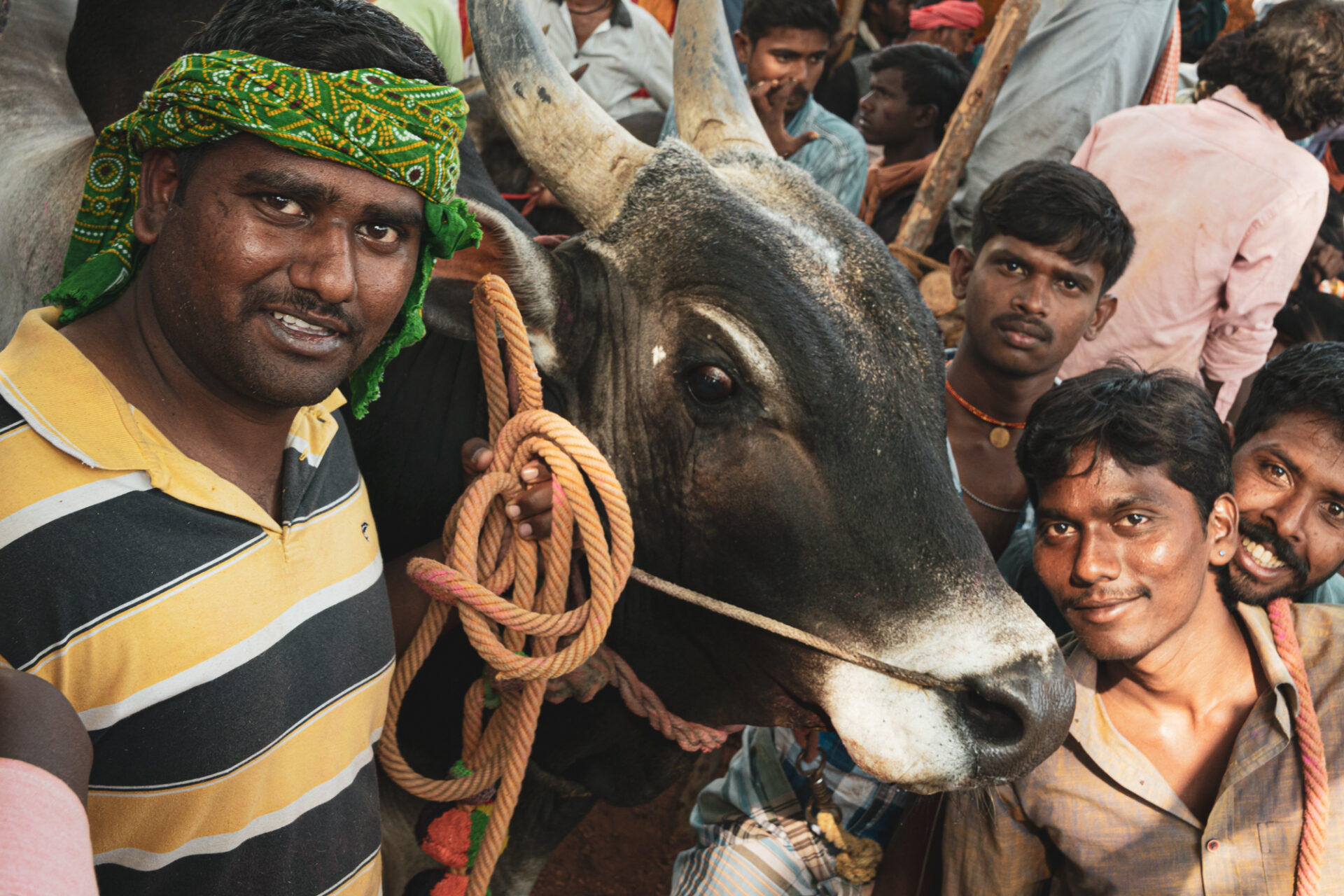
Depending on the owner, some cattle are raised to be more robust and ferocious. There are also cattle with horns sharpened to be as sharp as spears. Owners of bulls that rampage more extravagantly are rewarded with luxurious prizes.

Waiting for the bulls to jump out.
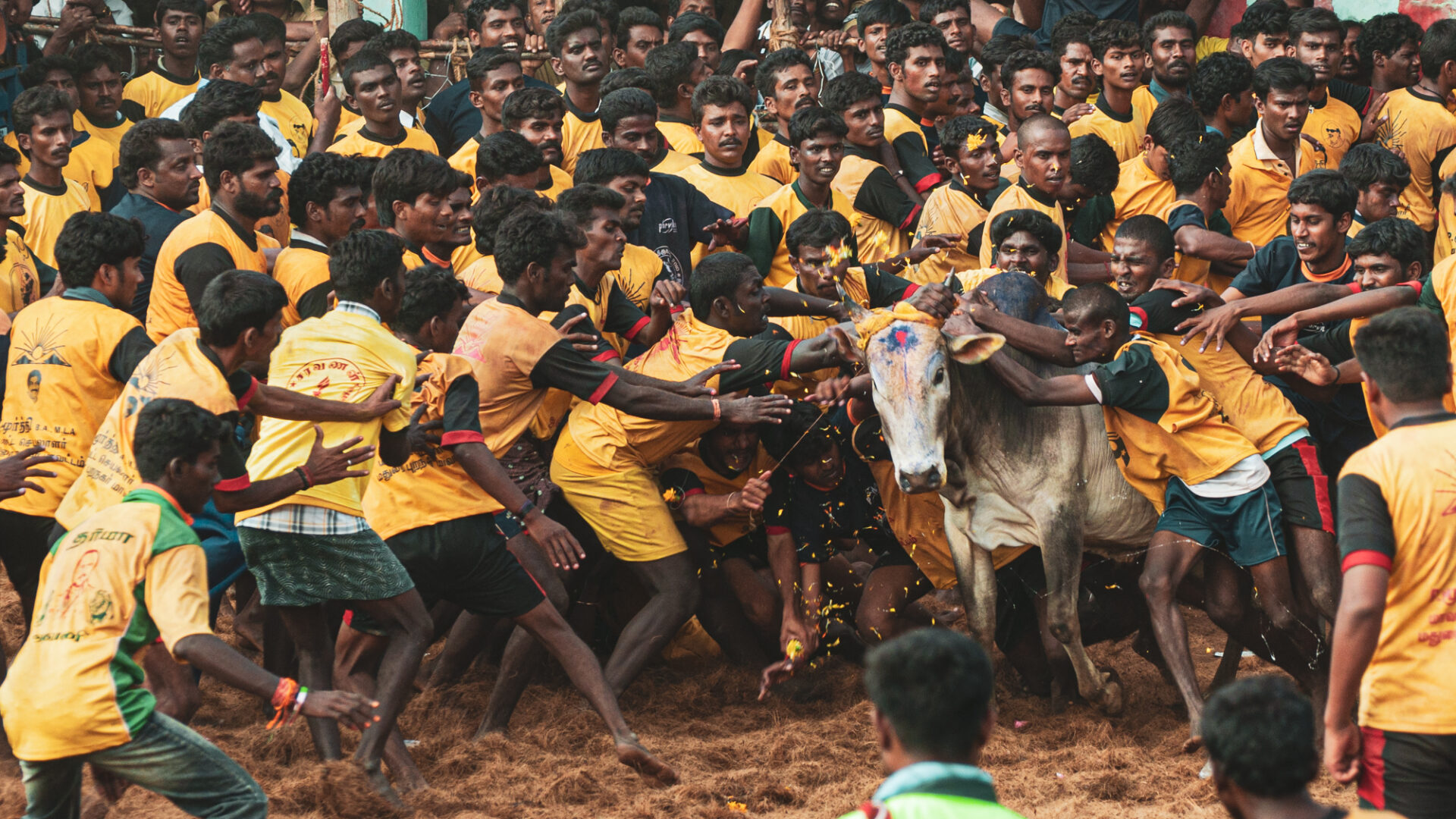
Those who successfully hold on to the bull may be offered a car as a prize.
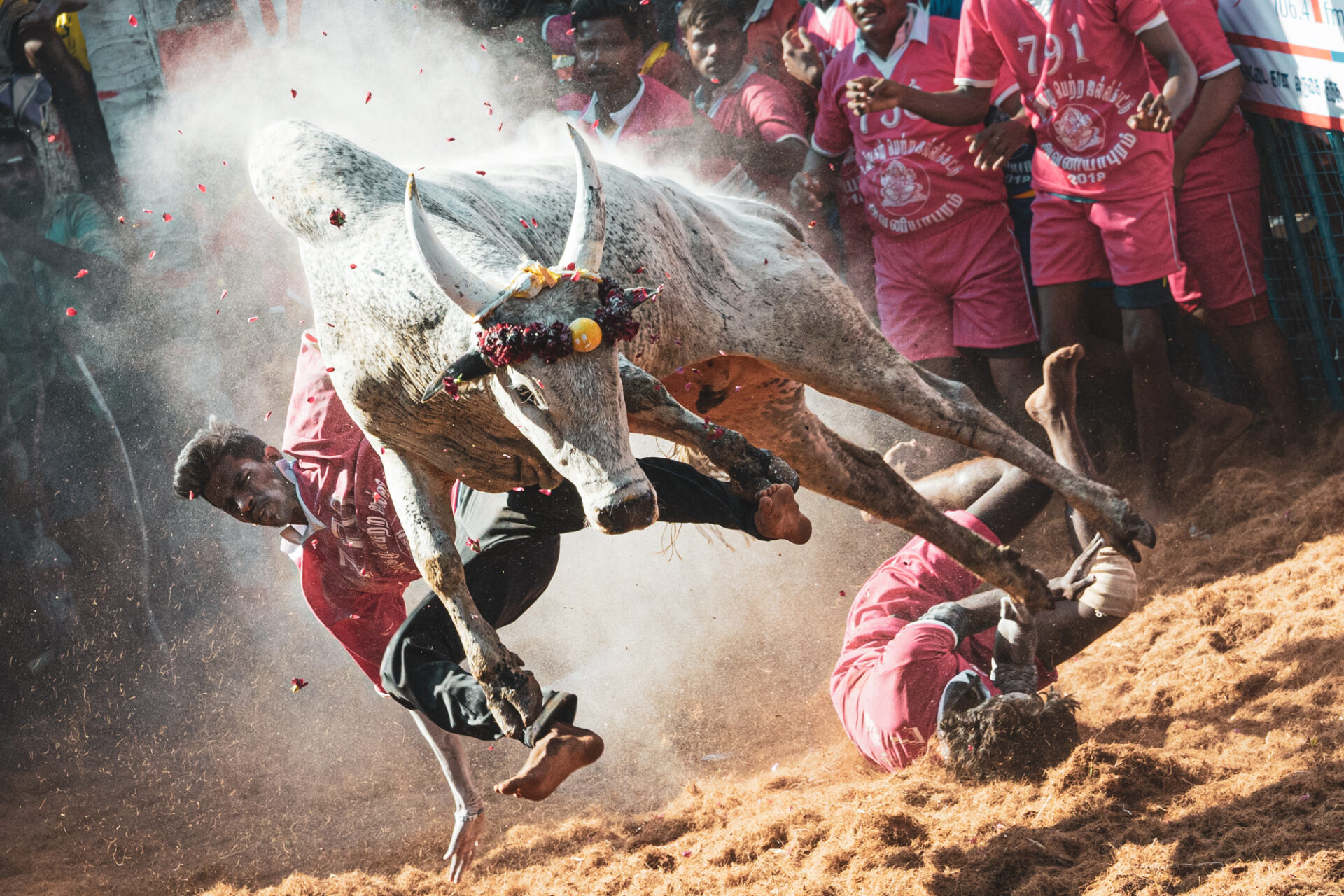
The white smoke is a white powder applied by the owners to pray for the safety of their cattle.

The famous Jallikattu is fenced off for safe viewing, but in rural areas, bulls are released in villages and squares, and anyone can participate.
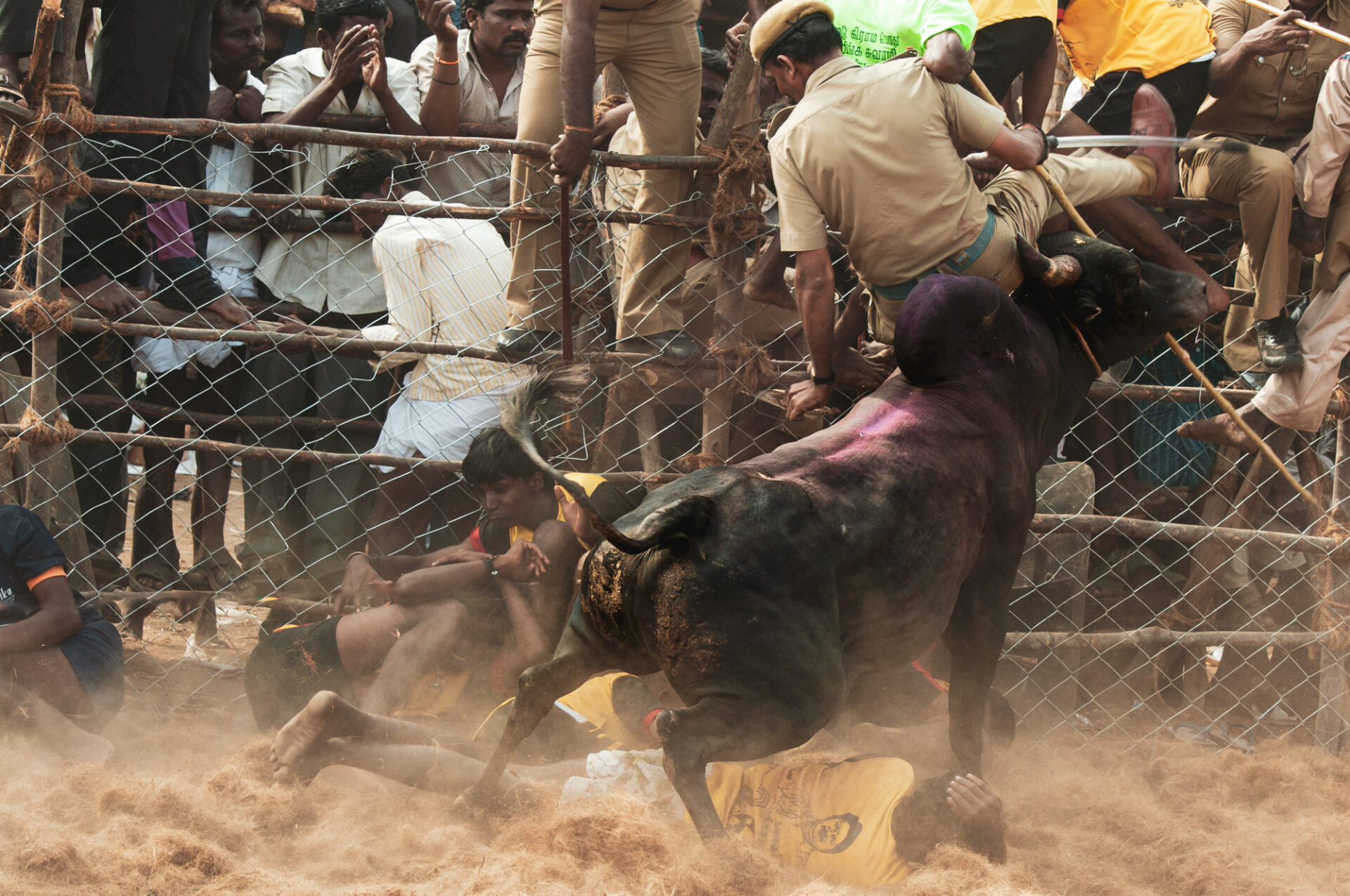
A policeman in the air.
Bull also blow up state power.
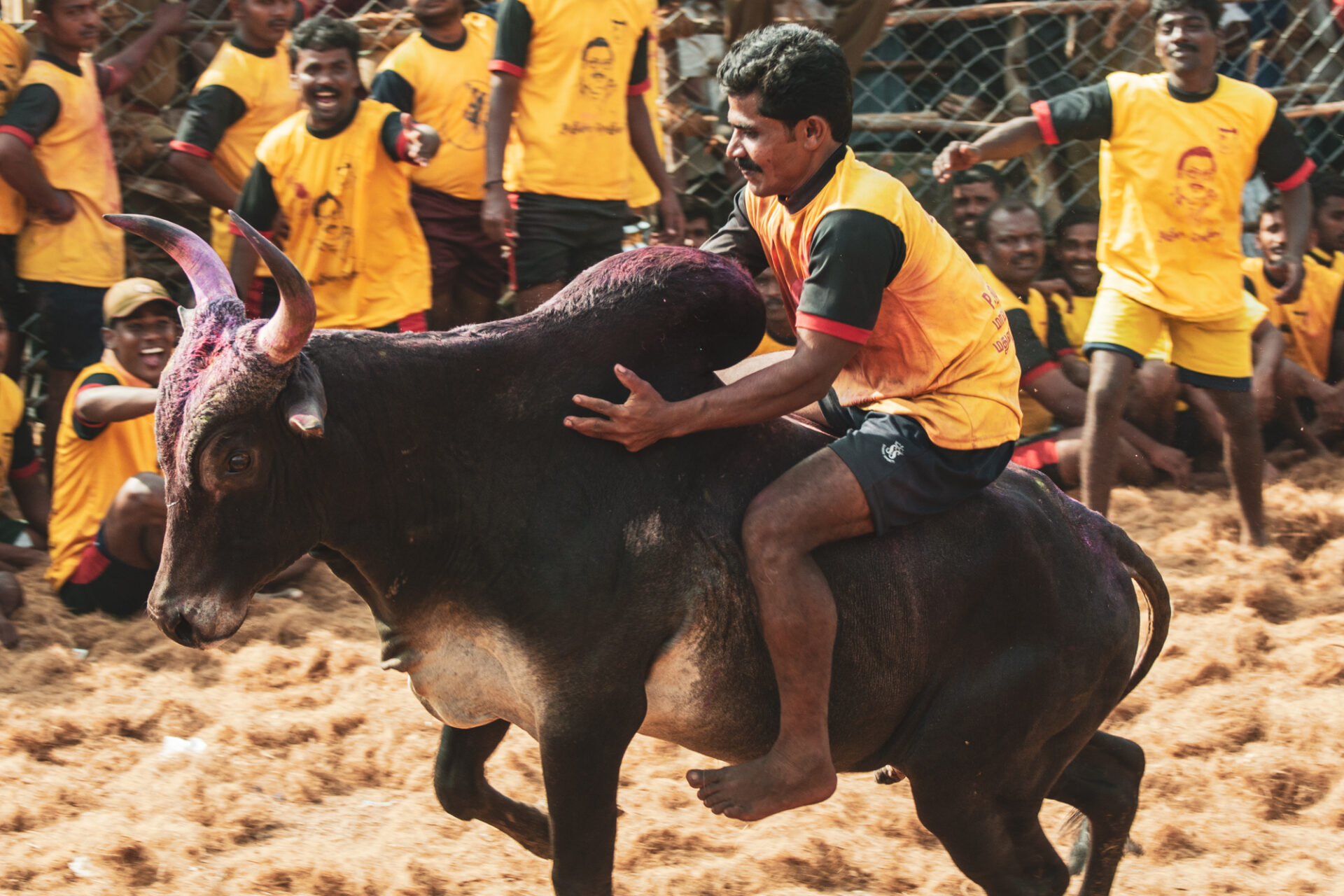
Miracle? He was pushed off and where he landed was on the back of a cow.
The tension that had been building up eased, and some pointed and laughed.However, we should not overlook the fact that they have sharp horns that can easily penetrate the human body.
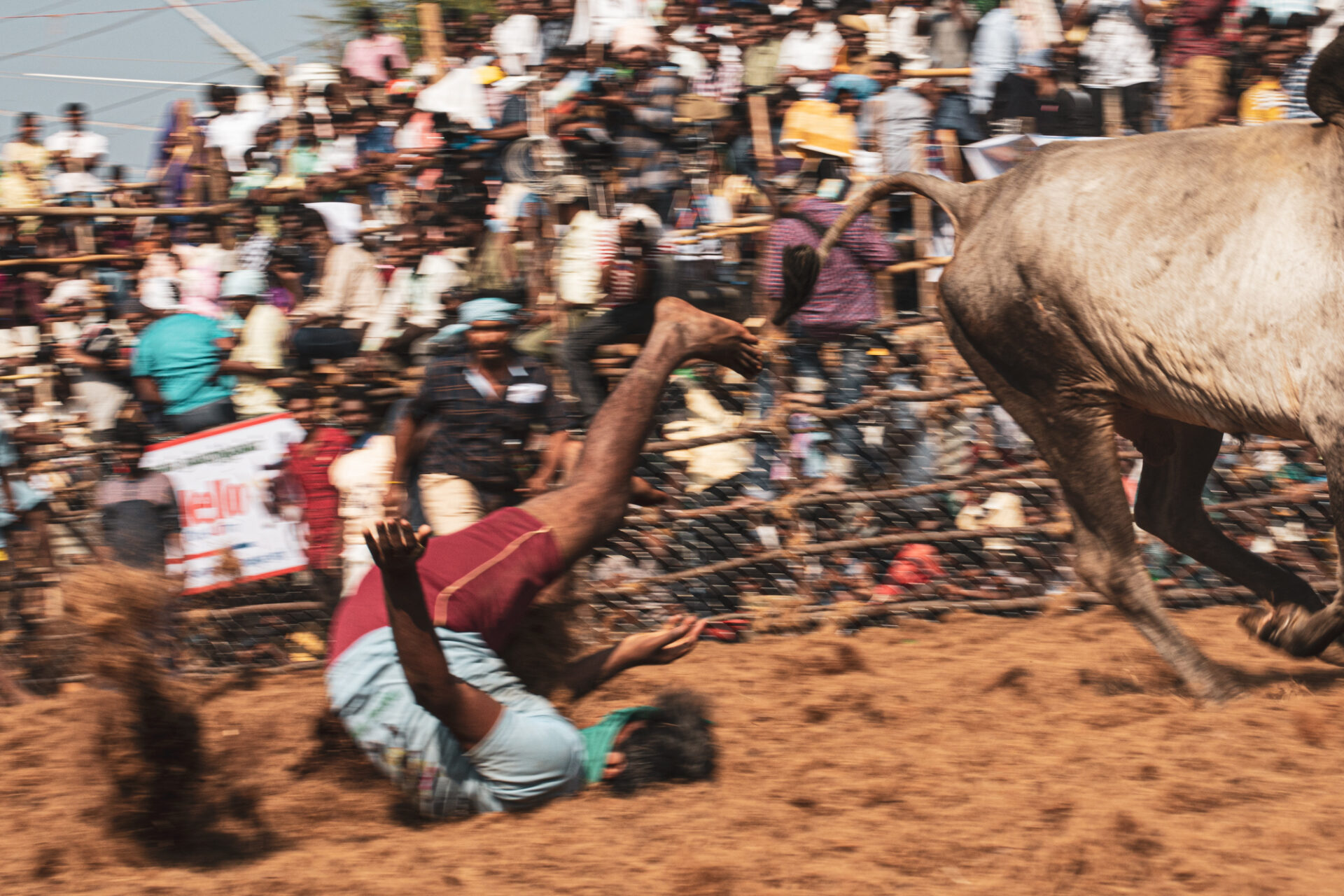
When the bull shook the man off, the man bounced and rolled like a pinball.
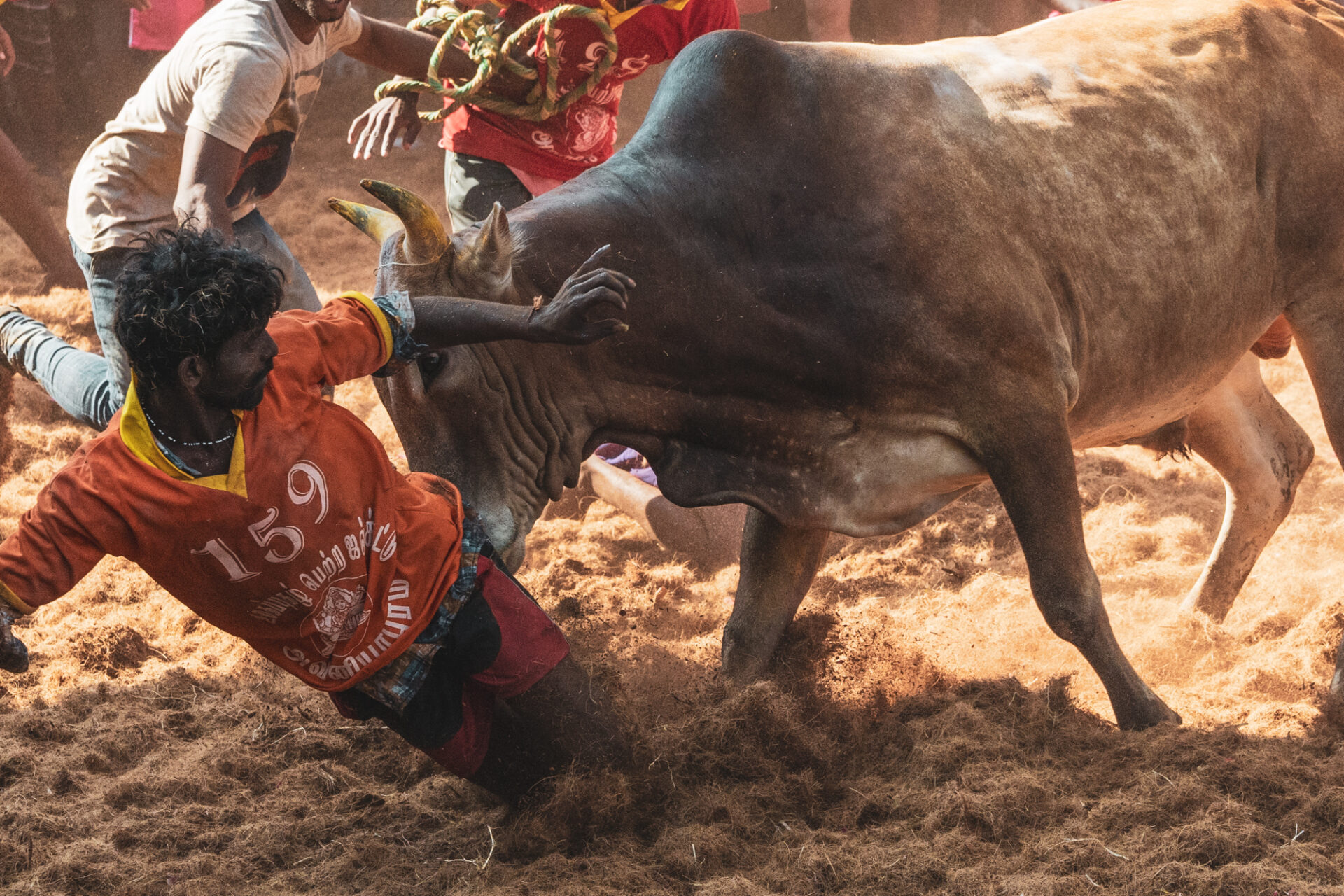
No matter how much they hurt people, they never kill cows.
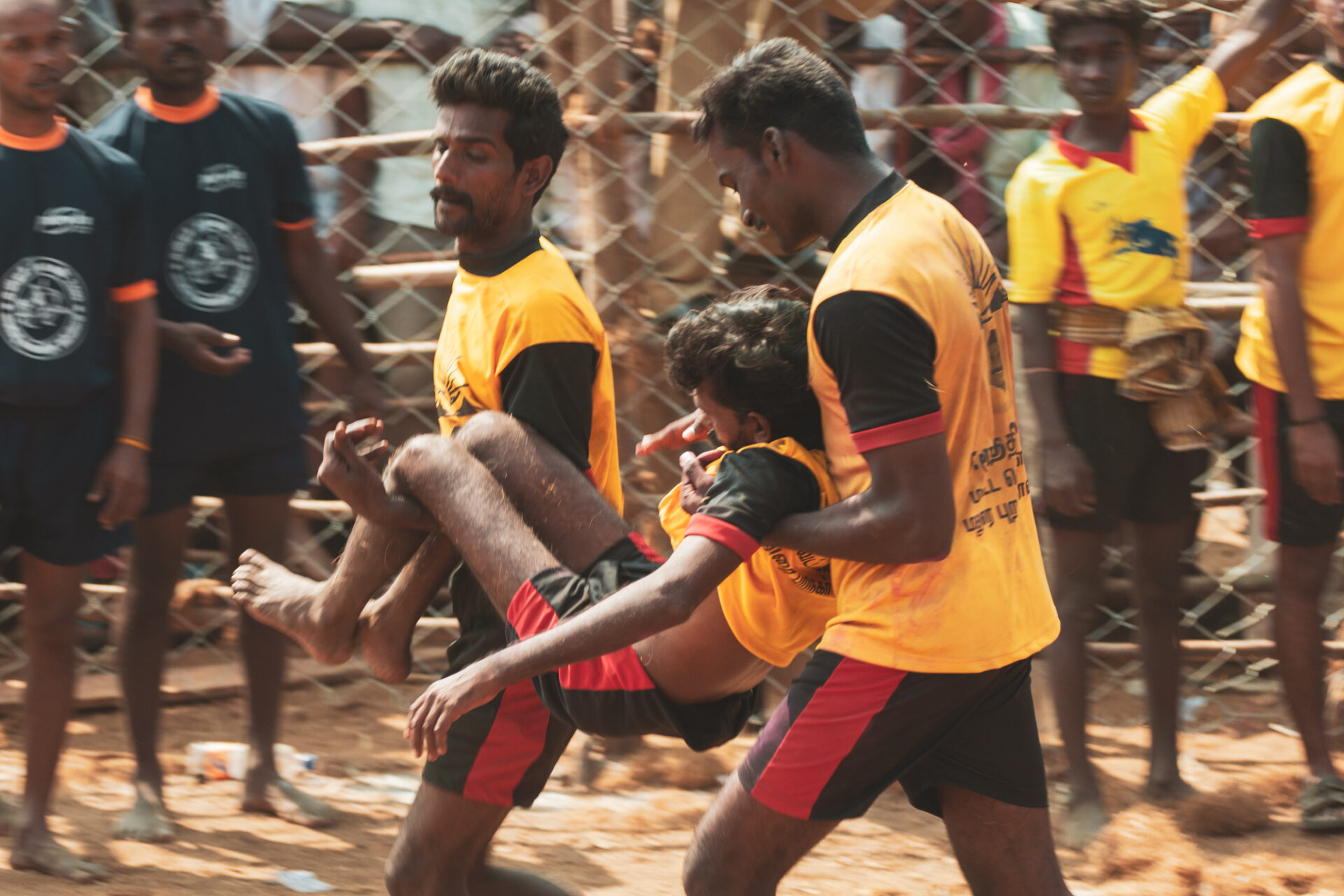
He is knocked unconscious by the bull's body blow and is carried out by his companions.
On that day, as I returned to the hotel with the porridge served at the festival venue, the owner handed me a newspaper. Both headlines were about "Jallikattu," reporting that two people had died and more than 30 others were seriously injured on the first day of the festival.
Some people were rushed, trampled, thrown, or pressed against fences, bleeding and carried away unconscious.
Perhaps, at that moment, I had captured the "last brave moments" of those who died with my camera.
Certainly, the prizes given to the competitors are luxurious, including cars, motorcycles, and furniture. However, I couldn't help but wonder if it was worth risking one's life for such rewards.
I don't know if what lies behind their actions is cultural background, greed, a sense of superiority, or religious belief. However, facing people with values I cannot fathom, I was once again overwhelmed by the profound depth of India.
But perhaps they have a "noble will to preserve tradition" that we cannot even imagine. And perhaps, at the root of it all, there is a "proud spirit" to contribute to the community by demonstrating their courage, regardless of the danger to their lives. When I thought about it that way, I felt that I had once again touched upon the complex and fascinating aspects of India.Incredible India.
* Pongal is a mixture of rice and sugar boiled and seasoned.
* I try to avoid posting similar photos, but this time I posted several photos with the same purpose to convey the power of the festival.
I hope even a fraction of the power of this festival can be conveyed to you.
